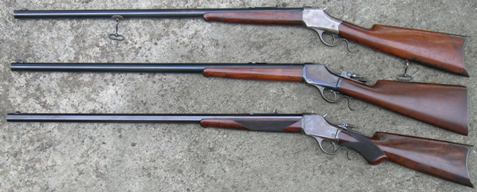February 27, 2020
 Offline
OfflineI’ve been offered an 1894 carbine SN 1012321 which has a saddle ring and lyman tang sight. I’ve been doing a bit of reading and noticed a few people saying the carbines built after 1925 aren’t worth as much. Is this correct?
Also, the blueing is quiet good on the barrel and magazine but almost gone on the receiver. Is it normal for the receiver to loose its blueing much quicker than the barrel?
Finally, the stock looks to have what I think are some patches that are over dry, is this a big issue?
Thanks
April 15, 2005
 Offline
OfflineOwen,
I don’t know why somebody would state that a post-1925 Model 94 SRC is worth less, but in my experience, it is not true. If anything, it is worth slightly more than those manufactured in the preceding 20-years. The reason for that, is that Winchester ceased using the cheaper, lighter weight (softer) Gumwood for the stocks and transitioned back to exclusively using American Black Walnut (a denser, stronger, and heavier wood). Where you will see a perceptible difference in value is the transition that took place during 1919, from “Model 1894” to “Model 94”.
In regards to your question about the bluing on the receiver frame, Yes, it is normal for the receiver frames to be grayed or silvered out, or nearly devoid of the original factory bluing, especially on those that were manufactured from late 1917 – 1931. In that time period, the bluing method used by Winchester was not compatible with the steel alloy used for the forged receiver frames, and it resulted in the well known (today) flaking problem. Winchester corrected that issue beginning in 1932 when they switched to “proof steel” (Chrome Moly alloy) and Dulite bluing.
As long as there is no dry-rot in the wood, it can be restored with hand rubbed True Oil.
Bert
WACA Historian & Board of Director Member #6571L

1 Guest(s)


 Log In
Log In




